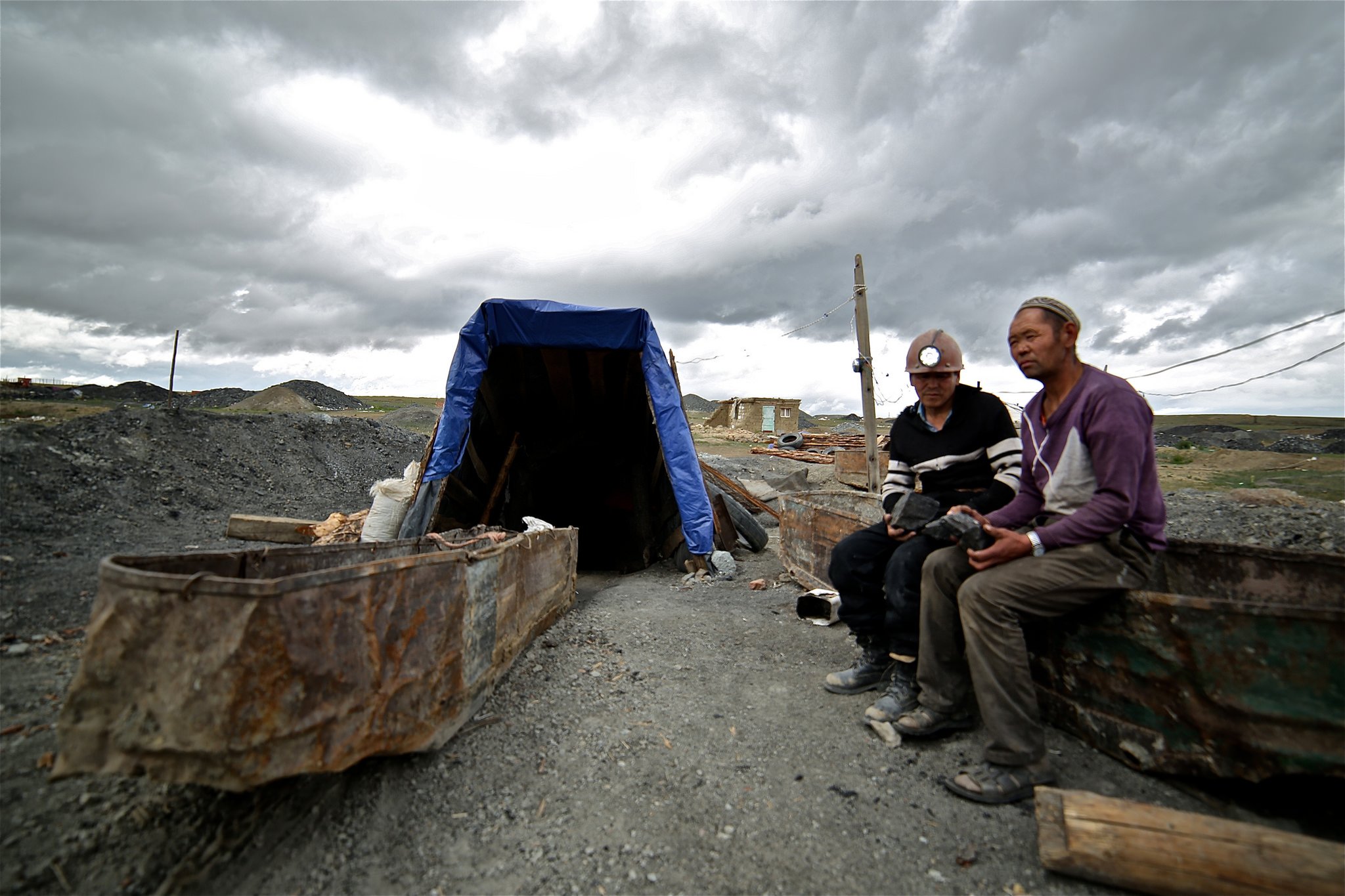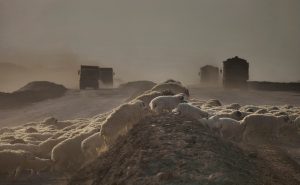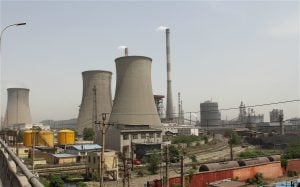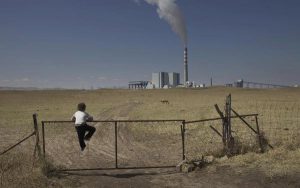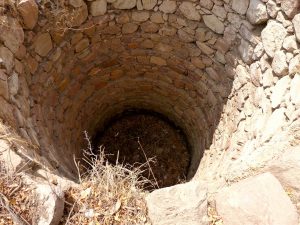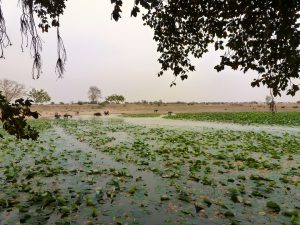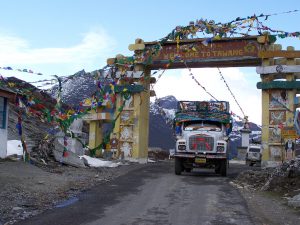A fifth of Mongolian land has been earmarked for mining. Investors are so happy about this they have given a new moniker to the world’s second-biggest landlocked country: “Minegolia”.
Mining’s share of Mongolia’s economy has doubled in a decade. Copper, gold, uranium, silver and coal mines account for 20-30% of national GDP and 89% of annual exports.
Oyu Tolgoi, already one of the largest mines in the world, is expected to expand during the next few years despite weak commodities prices, and will have an increasing impact on the country’s economy and its ecology.
The International Monetary Fund predicts that by 2021, Oyu Tolgoi will account for a third of Mongolia’s GDP and that mining’s share of the economy will account for over half.
But the Gobi Desert is more than a vast store of mineral deposits and is also home to many endangered plants and animals.
“The world is in danger of losing these valuable species into extinction forever,” said Choikhang Janchivlamdan, a director from the environmental non-profit Green Initiative, when asked about the impact of continued mining on these desert habitats.
Mining has left water reserves overexploited, he says. Even in rocky outcrops – previous havens for parched animals – water has disappeared, he adds.
One of these endangered animals is the Asiatic Wild Ass and Green Initiative has observed the species scraping 60-centimetre deep holes into the cracked banks of dried up rivers to quench their thirst.
Other endangered animals native to the Gobi include the black-tailed gazelle, argali sheep, ibex, Mongolian gazelle, corsac fox, cinereous vulture, steppe eagle and grey wolf.
While mining companies claim to use separate, deep-underground saline water called ‘fossil water’, in reality many do not. For this, deep drilling and large investment is required, says Mongolia’s United Nation’s Development Programme (UNDP) deputy representative, Thomas Eriksson. Instead of fossil water, mines use precious groundwater, polluting and draining water reserves that are shared with animals and people.
According to a World Bank study in 2010, the Southern Gobi region only has sufficient groundwater for the next decade or so, while herders in the region have testified to the impact of mining on aquifers.
Despite the droughts and other ecological threats posed by mining, many countries are still eager to follow the UK, Canada, Russia and China, and invest in Mongolia’s mining boom.
In 2011,Germany signed a coal agreement with Mongolia, Last year, a free trade agreement was signed with Japan, and a second trade agreement is in the works with South Korea.
Mongolia is heavily dependent on foreign investment, which it makes it difficult to reject proposals from foreign mining interests – especially from neighbouring China. Some 89% of Mongolia’s exports, which are mostly minerals, rely on Chinese buyers.
“There are few countries in the world where Chinese trade, foreign investment and global commodity prices have such an impact,” says Eriksson, as Mongolia “has not yet set aside sovereign wealth (for environmental protection or health)”
Mongolia is suffering from China’s economic slowdown and has already reacted with emergency austerity measures.
“This country is in deep trouble” says Sukhgerel Dugersuren, executive director of NGO Oyu Tolgoi Watch, expressing her concerns.
“A lot of Mongolians would say they have not seen much benefit (from mining),” says Eriksson. Most of the country still lacks running water, sewage, hospitals and roads.
Yet, according to the World Bank, Mongolia’s economy will likely remain on the up, while poverty levels are likely to fall.
To help entice foreign investment in mining, and in the hope that multinational companies would build much needed infrastructure, the government introduced the Land Allocation Law of Mongolia (2003; amended 2005/08). In it, if mining companies offer compensation for resettlement, and nomads refuse, they lose all land rights.
The law has proved controversial. In response, the Asian Development Bank wrote separate rules for its projects, adding that the existing law is: “incomplete, imprecise, and fails to adequately protect the rights of affected persons, ”
Forced to move to inadequate dry lands, nomadic herders give up, sell their animals, relocate to the city and look for a job.One readily available job is cleaning Oyu Tolgoi roads, says Dugersuren.
“People do not see that as a meaningful existence! You are a nomad. You are a proud person and it’s your lifestyle. You have all your future plans…then all of a sudden you lose it all. [Mining companies] give you a job that is collecting people’s trash.”
Desperate job-seeking nomads have also made the migration to an area atop the infamous Nilaikh coal mine.
Located on the outskirts of Ulan Bator, Nilaikh is the oldest coal mine in Mongolia. Closed since Mongolia’s revolution in 1990, Nilaikh is now covered in rotting animal corpses, piles of discarded plastic and rusting metal scraps as the government has tried to deter illegal mining by turning it into a rubbish dump. Undeterred, unlicensed groups still mine the abandoned tunnels.
There are no safety standards and no air testers, and mines are prone to regular collapse. “People lose their animals and are not experienced in mining,” says one local who did not want to be named. “They go down till their legs get weak. Nomads do not know about methane, and so, they die.” According to some locals, at least 10 lives are lost this way every year at the mine.
In an attempt to ‘offset’ displacement and ecological damage, mining companies, and the government, employ “broad and somewhat arbitrary parameters” a 2014 study, in the Journal of Environmental Management found.
Offsetting might be planting trees to replace ecosystems or erecting a community building to replace generations of tradition; and the practice does “not sufficiently consider real-world challenges in compensating losses in an effective and lasting manner,” the report concludes.
In response to Oyu Tolgoi’s ‘offsetting’, herders took a stand, petitioned and filed a complaint to the World Bank’s Compliance Advisor Ombudsman in April 2013.
Three years on, the complaint has yet to be resolved.
“For many, it (mining) is a cultural shock,” says Dugersuren. Even the traditional Mongolian boot has “the nose turned upwards so as not to kick a stone to disturb the earth.”
For the most sparsely populated country in the world, where the main form of transport is still horseback along zigzagging dirt roads, mass demonstrations against monolithic international mining and finance organisations are an exceptional struggle: “We are so very few. If we bring together 40 nomads in the Gobi, that is huge, this is a big thing for Mongolia, but it is nothing when foreigners look at it” says Dugersuren.
Deciding on what action to take can also be confusing, as the same companies that are the source of public grievances are also claiming to fund public services. For example, the UK mining firm, Rio Tinto reported providing a local hospital, “but you go there and there is one dental cabinet with a plaque that reads: World Bank financed,” says Dugersuren.
Alternatives
However, alternatives to economic dependency on mining are plausible and plentiful.
Mongolia’s abundant natural resources are perfect for ecotourism, and adventure holidays. A long-term government policy to protect tourism “from any negative effects from the mining industry” would help diversify Mongolia’s economy, says the Oxford Business Group’s 2013 Mongolia report.
“Local management models” could protect wildlife from mining while also empowering citizens, says Eriksson. The model is already successfully used by UNDP to protect river basins and forests. Nomads become “managers of the land” and the government “actually interacts with them,” he adds.
Renewables
Reducing Mongolia’s reliance on mining would make way for entirely new industries. The country gets plentiful and strong sunlight, and with an estimated 11GW of wind power that could be harnessed in the Gobi, there is huge potential for renewable energy.
Investment in Mongolian renewable energy could benefit all of Eurasia, says Batbold Ulziibayar, project contract manager for energy company, Clean Energy Asia (which developed Mongolia’s first windfarm in 2013).
Wind energy is “low impact on traditional nomadic lives with minimal land use.” But renewables are lacking the requisite financial inducements, says Eriksson.
With so many investment opportunities and natural resources available to it, the question is what will Mongolia choose to exploit, and what will it protect.
